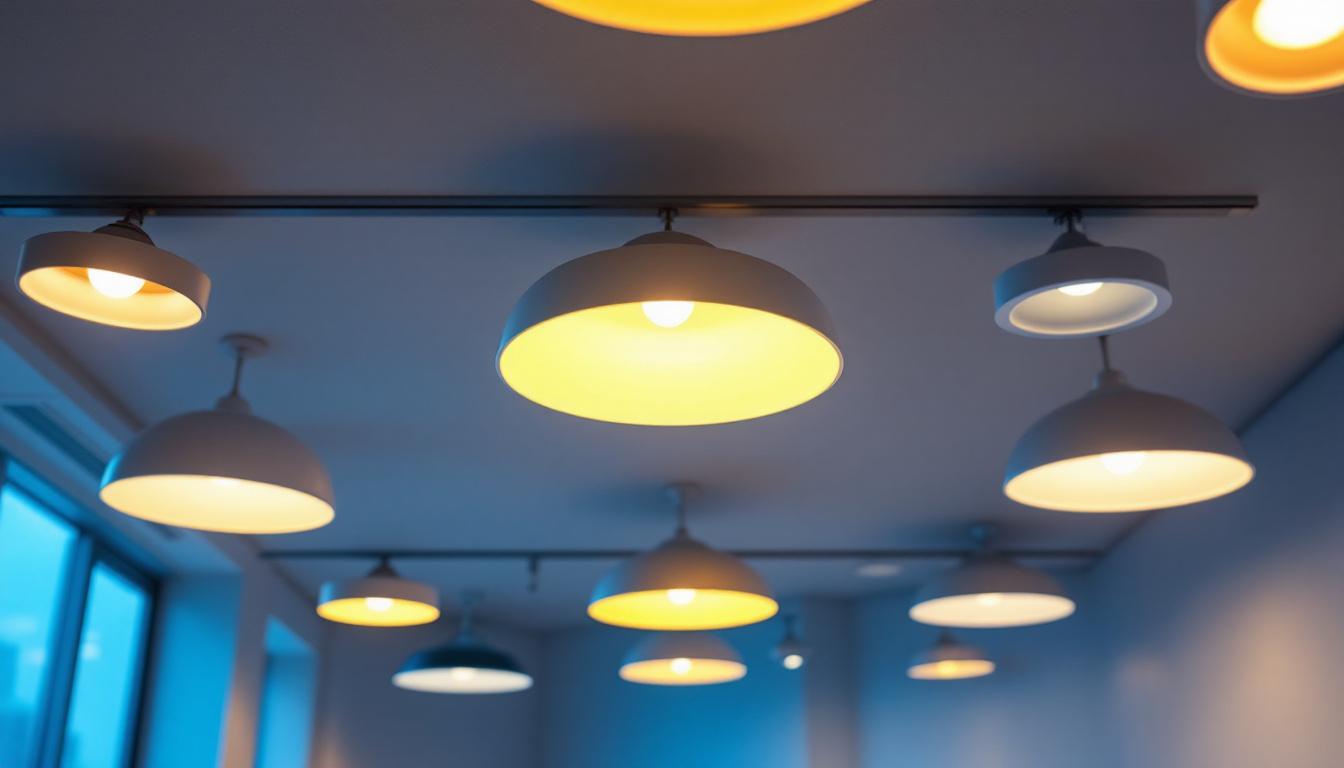
In the evolving world of lighting design, LED can trims have emerged as a game-changing solution for both residential and commercial applications. These innovative fixtures not only enhance aesthetic appeal but also offer energy efficiency and versatility. For lighting contractors, understanding how to leverage LED can trims can lead to better lighting solutions that meet the diverse needs of clients.
LED can trims are designed to fit into existing recessed can fixtures, providing a seamless and modern lighting solution. They come in various shapes, sizes, and color temperatures, making them suitable for different environments and applications. By replacing traditional incandescent or fluorescent bulbs with LED trims, contractors can significantly improve energy efficiency and reduce maintenance costs.
There are several types of LED can trims available, each catering to specific lighting needs. The most common types include:
The advantages of integrating LED can trims into lighting designs are numerous. Primarily, they offer significant energy savings compared to traditional lighting solutions. LED technology consumes less power, which translates into lower electricity bills for clients. Additionally, LED trims have a longer lifespan, reducing the frequency of replacements and the associated labor costs.
Moreover, LED can trims provide better light quality. With options for color temperature adjustments, contractors can create the perfect ambiance for any space, whether it’s a warm, inviting glow for residential areas or a bright, focused light for workspaces. This adaptability is particularly beneficial in multi-functional spaces, where lighting needs can change throughout the day or for different activities.
In addition to their functional benefits, LED can trims also contribute to sustainability efforts. By using less energy, they help reduce the carbon footprint of buildings, aligning with green building practices and certifications such as LEED. Many LED trims are also made from recyclable materials, further enhancing their eco-friendly appeal. As more consumers and businesses prioritize sustainability, the demand for energy-efficient lighting solutions like LED can trims continues to grow, making them an attractive option for contractors and designers alike.
When it comes to installing LED can trims, several factors must be taken into account to ensure optimal performance and safety. Proper installation not only enhances the functionality of the lighting but also maximizes energy efficiency.
Before selecting LED can trims, it is crucial to assess the compatibility with existing recessed can fixtures. Not all trims fit all cans, so verifying the size and type is essential. Most trims are designed to fit standard 4-inch, 5-inch, or 6-inch cans, but double-checking specifications can prevent installation issues.
Additionally, consider the type of housing in which the trims will be installed. IC-rated housings are suitable for contact with insulation, while non-IC rated housings should be installed in non-insulated ceilings to prevent overheating. In some cases, homeowners may want to upgrade their entire lighting system to accommodate modern LED technology, which can lead to improved aesthetics and energy savings. This could involve replacing older fixtures with new, energy-efficient models that are specifically designed to work seamlessly with LED trims.
Electrical compatibility is another critical aspect to consider. LED can trims typically operate on low voltage, so ensuring that the existing wiring can support this is essential. Using compatible dimmers can also enhance the functionality of the lighting system, allowing clients to adjust brightness levels according to their preferences. It’s worth noting that not all dimmers are created equal; selecting a dimmer specifically designed for LED lights can prevent flickering and ensure a smooth transition between brightness levels.
Furthermore, it’s advisable to check for any local codes or regulations regarding electrical installations. Compliance with safety standards not only protects clients but also enhances the contractor’s reputation. It may also be beneficial to consider the long-term maintenance of the lighting system. LED trims typically have a longer lifespan compared to traditional bulbs, but ensuring easy access for potential replacements or repairs can save time and effort in the future. Planning the layout of the lighting and the accessibility of fixtures can contribute significantly to the overall satisfaction of the installation.
Designing effective lighting solutions with LED can trims involves more than just installation; it requires a thoughtful approach to aesthetics and functionality. The right design can transform a space, enhancing its beauty while providing adequate illumination.
One effective strategy is to layer light. This involves combining ambient, task, and accent lighting to create a well-balanced environment. LED can trims can serve as a primary source of ambient light, while additional fixtures can provide task lighting for specific areas, such as workspaces or reading nooks.
For accent lighting, adjustable trims can be directed to highlight artwork or architectural details, drawing attention to focal points within a room. This layered approach not only enhances the visual appeal but also improves functionality, making spaces more inviting and usable. Moreover, integrating dimmable LED can trims allows for further customization of lighting levels throughout the day, enabling homeowners to adjust the ambiance based on their activities or mood. For instance, a bright, energizing light can be set for morning routines, while a softer glow can create a relaxing atmosphere for evening unwinding.
Color temperature plays a significant role in setting the mood of a space. Warmer temperatures (2700K-3000K) create a cozy and inviting atmosphere, ideal for living rooms and bedrooms. In contrast, cooler temperatures (4000K-5000K) are more suitable for workspaces and kitchens, where clarity and focus are paramount.
By offering clients the option to choose their preferred color temperature, contractors can tailor lighting solutions to meet individual preferences and needs. This personalization can greatly enhance client satisfaction and lead to repeat business. Additionally, understanding the psychological effects of color temperature can guide designers in making informed choices that align with the intended use of each room. For example, utilizing cooler tones in a home office can boost productivity and concentration, while warmer hues in a dining area can foster conversation and connection among family and friends. This thoughtful consideration of color temperature not only elevates the aesthetic but also contributes to the overall well-being of the occupants.
As energy efficiency becomes increasingly important in lighting design, LED can trims stand out as a sustainable choice. Their lower energy consumption not only benefits clients financially but also contributes to environmental conservation.
Switching to LED technology can significantly reduce a building’s carbon footprint. By consuming less power, LED can trims decrease the demand for electricity generated from fossil fuels, which in turn lowers greenhouse gas emissions. For contractors, promoting this aspect can resonate well with environmentally conscious clients.
Moreover, many LED products are designed with recyclable materials, further enhancing their sustainability profile. By choosing energy-efficient products, contractors can position themselves as leaders in eco-friendly lighting solutions.
Many regions offer incentives or rebates for energy-efficient upgrades, including the installation of LED can trims. Contractors should stay informed about available programs to help clients take advantage of these financial benefits. Not only does this make LED solutions more accessible, but it also encourages clients to invest in sustainable lighting options.
By educating clients about these incentives, contractors can build trust and strengthen relationships, ultimately leading to increased business opportunities.
The lighting industry is constantly evolving, and staying ahead of trends is crucial for contractors looking to provide cutting-edge solutions. LED can trims are no exception, with several emerging trends shaping their future.
One of the most significant trends is the integration of smart technology into LED can trims. Smart lighting systems allow users to control their lights remotely via smartphones or voice-activated devices. This level of control not only enhances convenience but also enables users to optimize energy usage.
Contractors should consider offering smart LED can trims as part of their lighting solutions. By doing so, they can appeal to tech-savvy clients looking for modern, efficient options that fit seamlessly into their smart home ecosystems.
As consumer preferences shift towards personalization, the demand for customizable LED can trims is on the rise. Manufacturers are increasingly offering trims with adjustable color temperatures, brightness levels, and even color-changing capabilities.
Contractors who can provide these customizable options will be better positioned to meet the diverse needs of their clients. This adaptability not only enhances the client experience but also sets contractors apart in a competitive market.
LED can trims represent a significant advancement in lighting technology, offering numerous benefits for both contractors and clients. By understanding their features, installation considerations, and design possibilities, lighting contractors can leverage these innovative solutions to create exceptional lighting experiences.
As the industry continues to evolve, staying informed about trends and advancements will be crucial for success. By embracing energy efficiency, sustainability, and smart technology, contractors can position themselves as leaders in the lighting market, providing clients with the best possible solutions for their lighting needs.
Ultimately, the strategic use of LED can trims can lead to enhanced aesthetics, improved energy efficiency, and greater client satisfaction, making them an indispensable tool in the modern lighting contractor’s toolkit.
Ready to elevate your lighting game with the advanced technology of LED can trims? Look no further than LumenWholesale for all your lighting needs. We provide contractors with high-quality, specification-grade lighting products at prices that can’t be beaten. Our commitment to cutting out the middleman means you get the best value for your investment. With our extensive selection of premium lighting solutions, you can ensure every project shines with reliability and performance. Plus, with free shipping on bulk orders, you can stock up on superior lighting without the worry of hidden fees. Don’t compromise on quality or cost. Discover wholesale lighting at the best value today and light up your projects with confidence.

Discover how the Bulb ST64 is revolutionizing the lighting industry for contractors, offering unmatched efficiency, style, and reliability.

Discover essential tips and best practices for lighting contractors on effectively installing garage light motion sensors.

Discover the essential best practices for lighting contractors in the realm of commercial outdoor LED lighting.

Discover the common oversights lighting contractors make with LED pot light fixtures.